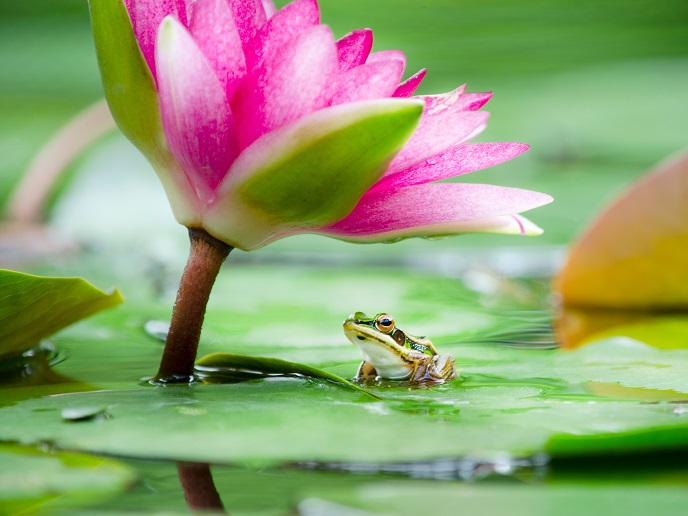How do lotus leaves clean themselves?
Sometimes, scientific discoveries need a catchy term to really capture the imagination. The ‘Lotus Effect’ is a case in point. Used to describe the amazing self-cleaning properties of the lotus leaf, the term has gone on to be used to market a range of products. “The ‘Lotus Effect’ could also be called the ‘Cabbage Effect’,” notes Bruns wryly. The professor of Sustainable Functional Materials at the Technical University of Darmstadt in Germany explains: “What it describes is a general principle found in all kinds of plants.” When water is applied to hydrophilic surfaces (meaning they are attracted to water), a watery film is created. On merely hydrophobic surfaces, the water sits on top, but does not necessarily form droplets. Only on superhydrophobic surfaces, such as those of the lotus leaf, does the water form droplets that roll right off. “The lotus leaf creates a superhydrophobic surface by excreting wax through the cuticle (the outermost layer),” explains Bruns. “And if you looked through a microscope, you would see that the leaf surface is made up of spikes formed by the epidermis cells. On top of this surface feature, there are tiny wax crystals creating another level of roughness.” It is this combination of surface features that sets the leaves apart – as droplets roll off, they pick up dust and other contaminants, cleaning the leaf along the way.
Applications of the ‘Lotus Effect’
“When scientists first discovered this, they made the nice move of calling it the ‘Lotus Effect’,” says Bruns. “In Asia especially, the plant is associated with purity. You can now find products like lotus effect self-cleaning paint, which recreates the surface structure of the leaf and promises to clean the façade of your house when it’s raining.” Other products – such as self-cleaning glass and car windshields – have also adapted the concept. The superhydrophobic structures may eventually wear off – not an issue for a plant that can grow new leaves, but windshields aren’t so easily replaced.
Learning about leaves
For Bruns, there is still much more to be learnt about the dynamic and complex behaviour of plants. In the EU-funded PlaMatSu project, he and his colleagues investigated the plant cuticle. “This is a very interesting structure,” he adds. “It is the leaf’s topmost layer and is actually created by the cells underneath, which excrete onto their surface a mix of waxes, carbohydrates and proteins. This forms the cuticle.” The project team noticed that cuticles come in all shapes and structures – they can be wrinkly, flat or spiky. These surfaces can make it difficult for an insect to attach itself to the leaf to feed. PlaMatSu tried to recreate a synthetic material which could be applied to surfaces for similar protection. “Cuticles also sometimes contain structural colour,” continues Bruns. “This means that colour effects are not based on pigments, but are simply a result of structure – the best example of this is the colour of some butterfly wings, but the phenomenon is also found in some plants.” Inspired by this, members of the project team developed a cellulose-based structured colour film material, which could be produced in large quantities. Bruns says this could then be turned into fully degradable, plastic-free glitter. Thank goodness for those self-cleaning surfaces. Click here to find out more about Nico Bruns’s research: Exotic new materials inspired by plants
Keywords
PlaMatSu, plants, leaves, lotus, cuticles, hydrophilic, hydrophobic, cellulose



